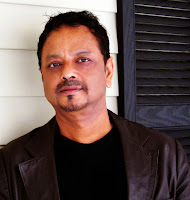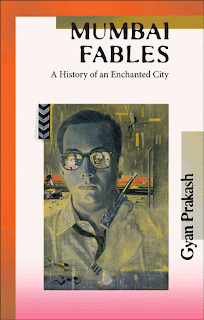Indian born History professor at Princeton University, USA,
Gyan Prakash is a historian of modern India whose general field of research and teaching interests concerns urban modernity, the colonial genealogies of modernity, and problems of post-colonial thought and politics. He teaches graduate students about modern South Asian history, colonialism and post-colonial theory, urban history, global history, and history of science.
 |
| Author: Gyan Prakash |
The historian is a B.A. (history) from Delhi University, an M.A. (history) from JNU, and a Ph.D. (history) from the University of Pennsylvania. He is the author quite a few books like Bonded Histories: Genealogies of Labor Servitude in Colonial India (1990), Another Reason: Science and the Imagination of Modern India (1999), Worlds Together: Worlds Apart: A History of the Modern World, 1300 to the Present (2002), etc.
One of his recently published books,
Mumbai Fables has been made into a major Bollywood motion picture named bombay Velvet. The book is a detailed description of the history of the city and its rise as a metropolis. Here is a sneak peak into the mind of the eminent historian as he speaks on the book, his love for history, and more:
Que: Your new book Mumbai Fables explores and depicts Mumbai city and its rich history with excruciating detail. Why did you decide to make Mumbai as the centre of your next book? Why not any other city?
Gyan Prakash: I was fascinated with Mumbai, or Bombay as it was then known, since my childhood. I grew up in Patna, where our home used to subscribe to the tabloid Blitz, and the magazine Illustrated Weekly. We saw Hindi films regularly. From all these, Bombay appeared not just as a city, but as a legend, a myth, an idea. It seemed like a magical place. Others had their New York, Paris, and London. Bombay was out shining metropolis. No other city in India had quite the same image. Bombay seemed to be the classic modern city. This childhood remained on my mind as I grew up. After finishing my last book, I decided in 2000 to come to Mumbai, I spent three months then, walking the city and talking to people. Usually, when you visit the actual place, the image you are carrying in your head crashes. In my case, those three months made the image more compelling, the myth became richer. I am a historian. So I decided to dig, to excavate what lies behind the city’s image, what are the back stories behind Mumbai’s representation as a city of opportunity and dreams.

Que: How did you research for the book?
Gyan Prakash: For the next eight years, I regularly spent at least three to four months every year in Mumbai. Here, I would meet and talk to people, use the Maharashtra State Archives, hunt for materials in libraries and in private collections. Sadly, archival materials and other sources on Mumbai are not preserved in the city. For example, I failed to find a continuous run of the tabloid Blitz in Mumbai. So, I conducted research in the British Library, London, and utilized archives and libraries in the United States, where I found microfilms of newspapers and other materials that were not accessible in Mumbai.
Que: What is it about History that fascinates you? How did this fascination develop?
Gyan Prakash: Initially, I became interested in history because the past fascinated me - how governments ruled, how people lived and loved, what they cared for, what objects they produced, etc. But the more I dealt with the objects from the past, the more interested I became in asking what is the process by which something is declared as over and done with, as history. To me, artifacts from the past - documents, images, material objects, built forms, institutions, etc. - not only tell us about the time gone by, but also contain traces of processes and forces that rendered them as history. So, for example, when I look at the Mumbai tabloids from the 1960s and things that they wrote about, they also tell me about how they were discarded as remainders of the past. In this sense, the past is also about the present; it is about how the present comes into existence by discarding something as history.
Que: How does it feel about Mumbai Fables adapted as a Bollywood movie? Have you seen Bombay Velvet? If yes, do you think it's does justice to the book?
Gyan Prakash: I have seen the film, four times already! I love the film. Since the film is not a documentary, it fictionalizes the historical events and transformations presented in the book and shows them in terms of the everyday lives of certain protagonists. And I think it does a good job of it. The film is also a stylized representation of history, so obviously it would be silly to look for one to one correspondence between fiction and reality. But I am very happy about the film.
Que: What is your next project? Tell us something about it?
Gyan Prakash: I am now working on a book on the Emergency. This was a momentous and turning point in the country, but curiously there is no history written on it. For the past few years I have been researching the subject and I expect to publish a book on it by the end of 2016.













